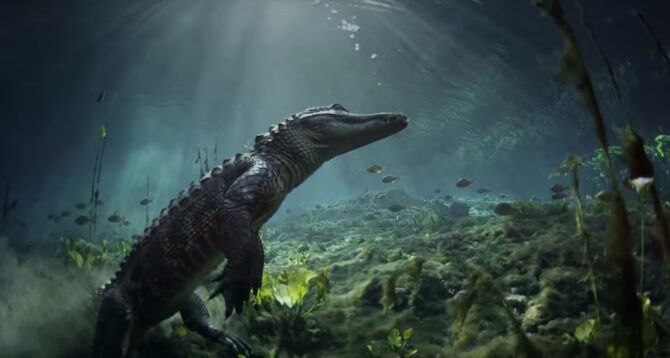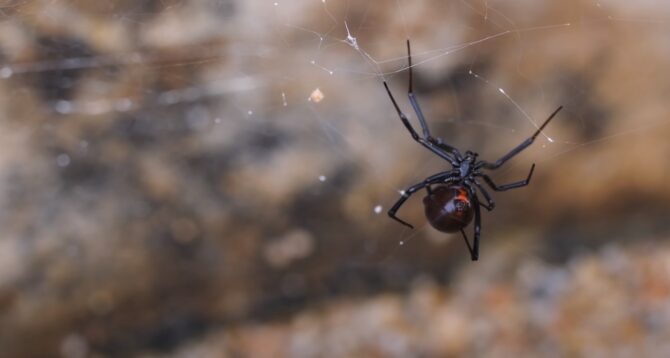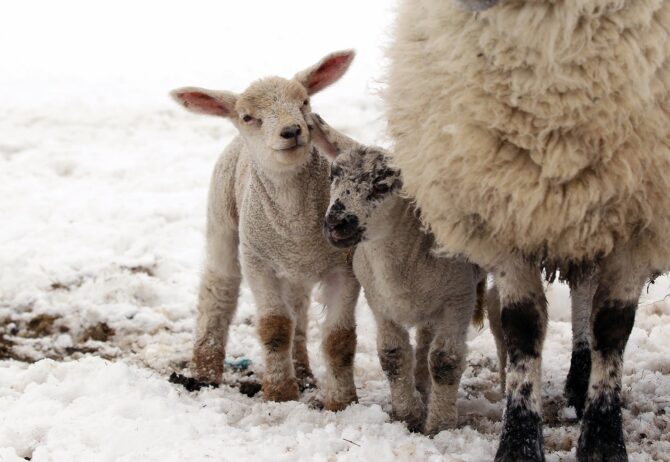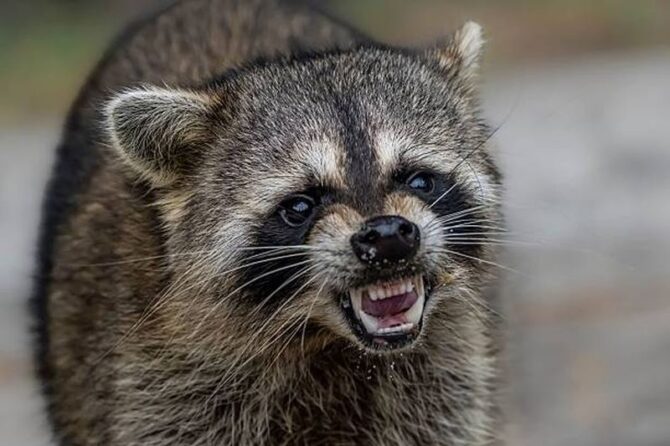First of all, even the most people will know it is a word about the state of Georgia, some of our readers who are not from the US will think it is about the country in eastern Europe (actually, a much bigger part of Georgia is in Asia).
Despite some similarities like that both countries are in the east of their continents and share some same wild dangerous animals (like a black bear or poisoned snakes) in our article, we have in mind the state of the US because there are much more dangerous animals than in Georgia country.
If you ever find yourself in Georgia (they’re not all in the forest), pray to God you are in Europe.
Joking aside, don’t mix these two beautiful countries. Let’s see from whom danger lurks.
Key Takeaway
8. Venomous Snakes

Snakes are common across Georgia, even in urban and suburban areas as we already wrote in the introduction. This state is home to a variety of snakes, and while many are harmless, it hosts several venomous species that command respect.
Among them, the Eastern Diamondback Rattlesnake stands out as the largest and most dangerous, with a powerful venom that demands immediate medical attention if bitten.
The Cottonmouth, or Water Moccasin, found near water bodies, has a distinctive white mouth, warning adventurers before striking.
The Copperhead, with its distinctive copper-red head, is more commonly encountered and, though its bite is rarely fatal, it requires prompt medical care.
Lastly, the smaller but equally venomous Coral Snake, with its bright, colorful bands, reminds us that beauty in nature can also signify danger. Remember, if you’re exploring Georgia’s great outdoors, admire these reptiles from a distance and tread carefully.
Eastern Diamondback Rattlesnakes: Rattling Danger
The eastern diamondback rattlesnake is the largest of its species in the world and the most venomous snake in North America.
It has a distinct coloration pattern consisting of dark diamond-shaped dorsal blotches defined by a border of yellowish scales.
These snakes are well known for their rattle and painful, venomous bite, which can be fatal to humans. The toxin in their venom, called hemotoxin, kills red blood cells and causes tissue damage.
What is the most rattles a rattlesnake can have?
Diamondback rattlesnakes usually have between 8 and 13 rattles on their tail.
The number of rattles can give an indication of the snake’s age, as each time it sheds its skin, a new segment is added to the rattle.
Coral Snakes: Hidden Lethality
My friend told me once that a backpacker he met in the Oconee National Forest recalled a close call. A coral snake slithered into their tent, its vibrant bands a warning.
They wisely retreated, shaken but alive. Generally, In Georgia, coral snakes are mainly found in the Coastal Plain, though there is a population that occurs in the lower Piedmont along the Flint River basin.
There are wide gaps in their documented range, and animals have not been found in the predicted range even though the habitat may seem ideal.
How venomous is a coral snake?
Compared to other venomous snakes, their bite marks can be easily missed, often showing no significant local tissue damage, obvious injury, or pain.
However, the venom of the Eastern coral snake contains very potent neurotoxins that can cause severe illness or death if left untreated.
What happens if you are bitten by a coral snake?
Unlike pit viper venom, coral snake venom is primarily a neurotoxin. There is little or no pain and swelling, and symptoms may not appear for hours.
But once symptoms do appear, they progress rapidly: euphoria and drowsiness, nausea and vomiting, headache, difficulty in breathing, and paralysis.
Did you know that 7,000 – 8,000 people per year are bitten by venomous snakes in Georgia?
Copperhead Snakes: Camouflaged Killers
The copperhead can be found throughout most of Georgia, except for the southeastern corner.
The northern copperhead is found in the mountainous counties of the north area.
The southern copperhead is found below the fall line but not in the most southeastern counties along the Florida line.
If you come across this snake, the best thing to do is give the snake a wide berth and steer children and pets safely away.
Did you know that the inland taipan is considered the most venomous snake in the world? Its murine LD 50 value is 0.025 mg/kg SC, according to Ernst and Zug et al. 1996. In their study, they list a value of 0.01 mg/kg SC, which also makes it the most venomous snake in the world. However, according to other studies cited by Britannica, the saw-scaled viper, Echis carinatus, is considered the deadliest snake in the world. Both of these snakes are found in Australia and Asia, but not in Georgia.
7. Alligators

There are approximately 200,000-250,000 alligators in the state of Georgia. They typically live along and south of the fall line (which roughly traverses the cities of Columbus, Macon, and Augusta) alligator, an iconic symbol of the southern United States, thrives in Georgia’s freshwater ecosystems.
These impressive reptiles, often seen sunning themselves by water bodies or gliding silently through the water, can grow up to 15 feet long.
Fatal alligator attacks are incredibly rare (there’s only been one ever in Georgia‚ in 2007), the potential for danger is always present—for both parties.
“A fed gator is a dead gator‚” says wildlife manager Joseph Colbert. “If one becomes too aggressive we would have to put it down”.
Alligators add a prehistoric allure to Georgia’s landscapes, offering a glimpse into a world unchanged for millions of years.
For the adventurous at heart, spotting an alligator can be a thrilling highlight of exploring Georgia’s wild spaces.
6. Snapping Turtles: Jaws of the Swamp
Common snapping turtles are found throughout eastern North America including all of South Carolina and Georgia.
They inhabit almost any body of freshwater throughout their range. Some have even been found in brackish water.
Snappers are not dangerous toward humans unless they feel attacked. People who have witnessed such wounds claim that they look much like a surgeon had just made the amputation.
Why is the alligator snapping turtle called by that name? It is because of its incredibly powerful jaws combined with those three ridges on its shell.
5. Black Bears
Roaming the mountainous and forested regions of Georgia, black bears are a majestic sight for nature lovers. As the state’s largest land mammal, they embody the wild spirit of Georgia’s landscapes.
While encounters are rare and black bears usually avoid humans, it’s important to practice bear safety by securing food and trash, especially when camping.
Witnessing a black bear in its natural habitat, from a respectful distance, is an unforgettable experience that connects adventurers with the raw beauty of nature.
“Be careful in Georgia’s wilderness —poison ivy, poison oak, and poison sumac lurk among the vibrant wildflowers, ready to leave their mark with an itchy souvenir!”
4. Bobcats: Fierce and Unpredictable
The bobcat (Lynx rufus) is a native mammal in Georgia and a member of the Felidae family. It may be classified as Felis rufus in some texts. Bobcats are about twice the size of the common house cat. Bobcats are generally yellowish brown with various streaks or spots of dark brown or black.
Rest assured, bobcats do not attack people. In fact, bobcat attacks are virtually unknown; however, no one should ever attempt to touch or handle a wild bobcat or her kittens.
However, if you find yourself in dangerous, use noise and/or motion-activated deterrents to make a bobcat uncomfortable.
3. Insects
The state’s warm climate is perfect for a variety of stinging insects, including bees, wasps, and fire ants. While their presence is a testament to Georgia’s buzzing biodiversity, it’s wise to be mindful of nests and hives during outdoor activities.
A sting can be a painful reminder to watch where you step or reach. However, these insects are also crucial pollinators, adding to the ecological richness that makes Georgia’s natural landscapes so inviting. For those with an adventurous spirit, Georgia offers a rich tapestry of wildlife encounters that can add excitement to your explorations.
Respect for nature’s inhabitants ensures that these encounters remain safe and enriching, allowing you to fully embrace the wild beauty of Georgia’s great outdoors.
Fire Ants: Tiny Terrors
Ants are one of those common insects we can easily find around our homes and gardens, with over 10,000 species worldwide.
By far the most common nuisance ant in Georgia, fire ants aren’t native to Georgia (likely, they were imported from South America), but they have, unfortunately, made this state their home.
Anyone who has accidentally disturbed a fire ant nest knows how aggressive they are and how painful their bite is.
Fire ant venom may cause a severe reaction in hypersensitive individuals, including nausea, shock, chest pains, and in rare cases, coma.
Despite their tiny size, fire ants pack a punch in Georgia, delivering stings that can cause significant allergic reactions. They’re a fiery fixture in fields, parks, and backyards across the state!
1. Black Widow Spiders: Dark Secrets
The Northern Black Widow spider is a close relative of the Southern Black Widow spider, and both can be found in Georgia. They are also found in cool, dark places like wood piles and stone walls.
Both of them are extremely poisonous spiders in Georgia and can cause significant injury.
They are also known for their aggression, so it’s important to watch out for them!
They’re a glossy black and are easily identified by their red hourglass shapes on their abdomens.
If you bitten by a black widow quickly wash the area with soap and water. Apply a cold washcloth or ice pack wrapped in cloth to the area. Take an over-the-counter pain reliever like acetaminophen.
Brown Recluse Spider (Violin Spider)
The brown recluse is a spider whose venomous bite may be medically significant to humans, though a bite is almost never fatal. The name “violin spider” describes a characteristic marking on the brown recluse: there is a violin-shaped patch on the broad, almost heart-shaped cephalothorax (the head, as opposed to the abdomen).
The overall color is usually a grayish yellow-brown, the oblong abdomen covered with fine gray hairs.
The legs are darker than the body and are long and slim. Females are larger then males. The webs, associated with egg sacs, are small, irregular, and untidy.
These spiders are usually seen walking or running around, not in a web.
Summary
Georgia’s great outdoors offer a thrilling adventure, but caution is essential. From venomous snakes like the Eastern Diamondback rattlesnake to formidable black bears, Georgia’s wildlife is mesmerizing.
Fire ants, though small, fiercely defend their territory.
Respect and awareness are key.
As you explore, remember that adventure and the wild coexist in Georgia, where discovery awaits around every corner, nodding to the wild residents.






